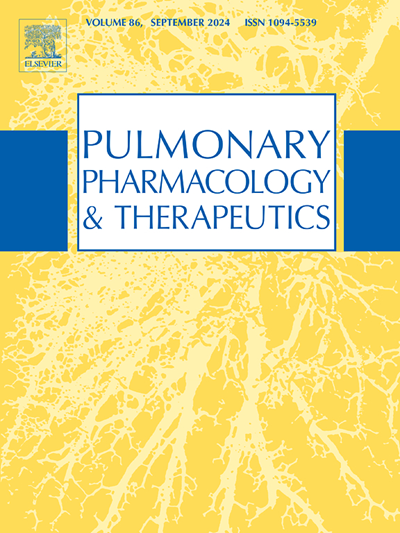Exploring the role of β2- and β3-adrenergic receptors in cystic fibrosis
IF 2.8
3区 医学
Q2 PHARMACOLOGY & PHARMACY
引用次数: 0
Abstract
Cystic fibrosis (CF) is an autosomal recessive disorder that affects multiple organs, with clinical manifestations, disease progression, and response to therapy varying among individuals. This effect is mainly caused by mutations in the gene encoding for the CF transmembrane conductance regulator (CFTR), a cAMP-regulated chloride channel.
In recent decades, other genes and their allelic variants, beyond CFTR mutations, have been proposed as genetic modifiers of CF phenotype. For instance, different polymorphic β2-adrenergic receptor (β2AR) polymorphic variants have been reported in CF individuals and appear to influence correct receptor function. β2AR belongs to the βAR family, which includes three subtypes: β1AR, β2AR, and β3AR. These receptors are crucial G protein-coupled receptors (GPCRs) expressed in various cell types and serve as key modulators of cAMP production, making their function particularly relevant in CF pathophysiology. β2AR is abundantly expressed in airway epithelial and smooth muscle cells, and studies revealed that it plays a crucial role in modulating CFTR activity and smooth muscle contractility through cAMP signaling. For these reasons, β2-agonists are widely used in clinical healthcare to treat patients with obstructive airway disorders, including CF.
Emerging evidence has also supported a role for β3AR, which is expressed in the canine and human bronchial epithelium and have been reported to enhance ciliary motility and regulate CFTR function, making it a potential therapeutic target in CF.
探讨β2-和β3肾上腺素能受体在囊性纤维化中的作用
囊性纤维化(CF)是一种常染色体隐性遗传病,可影响多个器官,其临床表现、疾病进展和对治疗的反应因人而异。这种影响主要是由编码CF跨膜电导调节器(CFTR)的基因突变引起的,CFTR是camp调节的氯离子通道。近几十年来,除了CFTR突变外,其他基因及其等位变异也被认为是CF表型的遗传修饰因子。例如,在CF个体中已经报道了不同的多态β2-肾上腺素能受体(β2AR)多态变异,并且似乎影响了正确的受体功能。β2AR属于βAR家族,包括β1AR、β2AR和β3AR三个亚型。这些受体是关键的G蛋白偶联受体(gpcr),在各种细胞类型中表达,并作为cAMP产生的关键调节剂,使其功能与CF病理生理特别相关。β2AR在气道上皮细胞和平滑肌细胞中大量表达,研究发现它通过cAMP信号通路在调节CFTR活性和平滑肌收缩力中起着至关重要的作用。由于这些原因,β2激动剂被广泛应用于临床医疗保健,用于治疗包括CF在内的阻塞性气道疾病。新的证据也支持β3AR的作用,β3AR在犬和人的支气管上皮中表达,据报道可增强纤毛运动性并调节CFTR功能,使其成为CF的潜在治疗靶点。
本文章由计算机程序翻译,如有差异,请以英文原文为准。
求助全文
约1分钟内获得全文
求助全文
来源期刊
CiteScore
6.20
自引率
0.00%
发文量
41
审稿时长
42 days
期刊介绍:
Pulmonary Pharmacology and Therapeutics (formerly Pulmonary Pharmacology) is concerned with lung pharmacology from molecular to clinical aspects. The subject matter encompasses the major diseases of the lung including asthma, cystic fibrosis, pulmonary circulation, ARDS, carcinoma, bronchitis, emphysema and drug delivery. Laboratory and clinical research on man and animals will be considered including studies related to chemotherapy of cancer, tuberculosis and infection. In addition to original research papers the journal will include review articles and book reviews.
Research Areas Include:
• All major diseases of the lung
• Physiology
• Pathology
• Drug delivery
• Metabolism
• Pulmonary Toxicology.

 求助内容:
求助内容: 应助结果提醒方式:
应助结果提醒方式:


